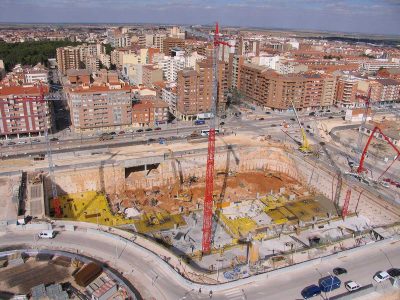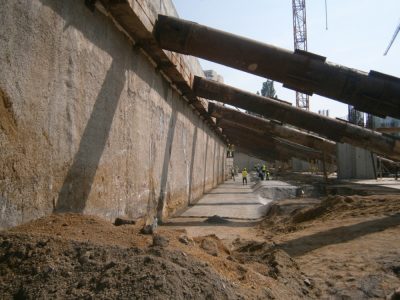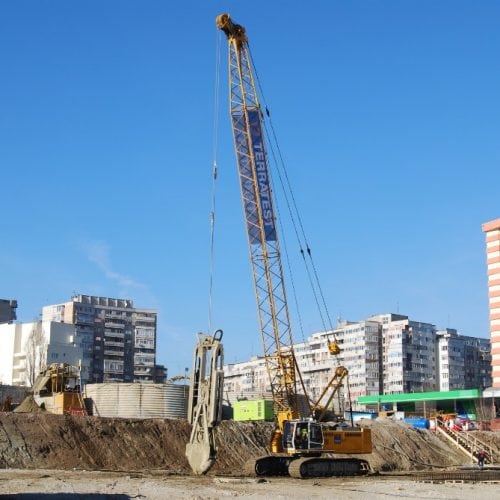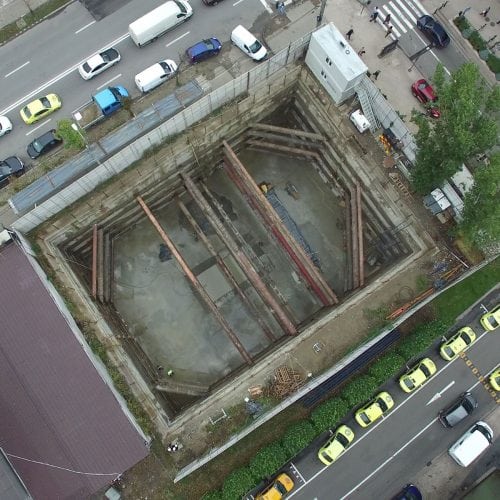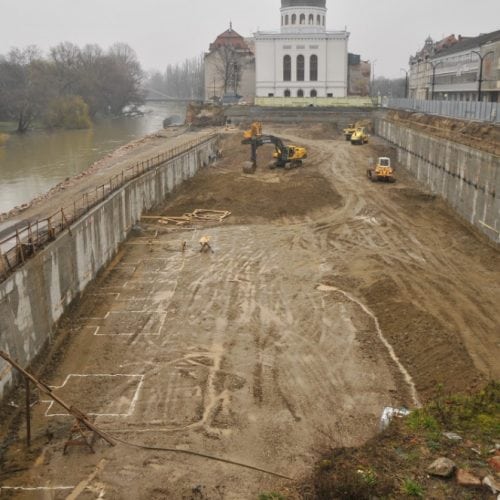Diaphragm Walls-Trench Cutter
Concept and characteristics
Continuous reinforced concrete core walls are vertical walls made in spans of up to 7 metres in length and thicknesses between 0.40 and 1.50 metres, and depths of up to 70 m, and offer a solution to excavation difficulties in urban areas or around the water table level.
Procedure
To install diaphragm walls in the ground, mechanically-driven grab buckets are used with weight ratings of between 5 and 23 Tons and grab openings of between 2.60 and 4.20 metres. The grab will start the excavation to the projected depth, normally with the help of bentonite slurries. These liquids, of variable density (and whose principle component is bentonite) allow the excavation to be completed cleanly and do nottrigger the collapse of the surrounding walls. The bentonite can be introduced into the excavation cavity by pumps from storage tanks.
Once the foundation trench is excavated, the steel reinforcement indicated in the project drawings is introduced, and the concrete is poured using a Tremie pipe. With the help of excavation or other auxiliary equipment the framework is introduced and concreted whilst the excavation begins on the next trench. These steps are repeated successively until the completion of the diaphragm wall around the perimeter of the site.
Applications
They are used in a large number of projects (bearing structures, provisional or definitive retaining walls, etc.) and represent a solution to different problems ranging from the excavation of underground structures such as underground car parks and basements, subways, etc., to the creation of subsoil waterproofing in embankment dams.
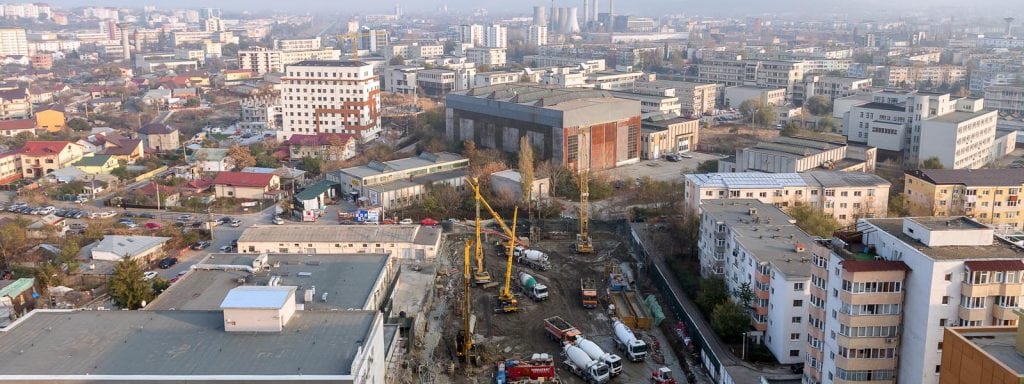
Trench Cutter
Terratest is one of the world leaders in the execution of Diaphragm Walls with Trench Cutter. A Trench Cutter is a reverse circulation excavation machine, consisting of a heavy steel frame and two cutting wheels attached to its bottom end. The wheels rotate in opposite directions around horizontal axes, breaking the soil beneath the cutter and pumping it out of the trench to a complex desanding plant.
The Trench Cutter is used:
- For the excavation of hard rock formation.
- For large thickness and depths.
- And when high accuracy is required.

